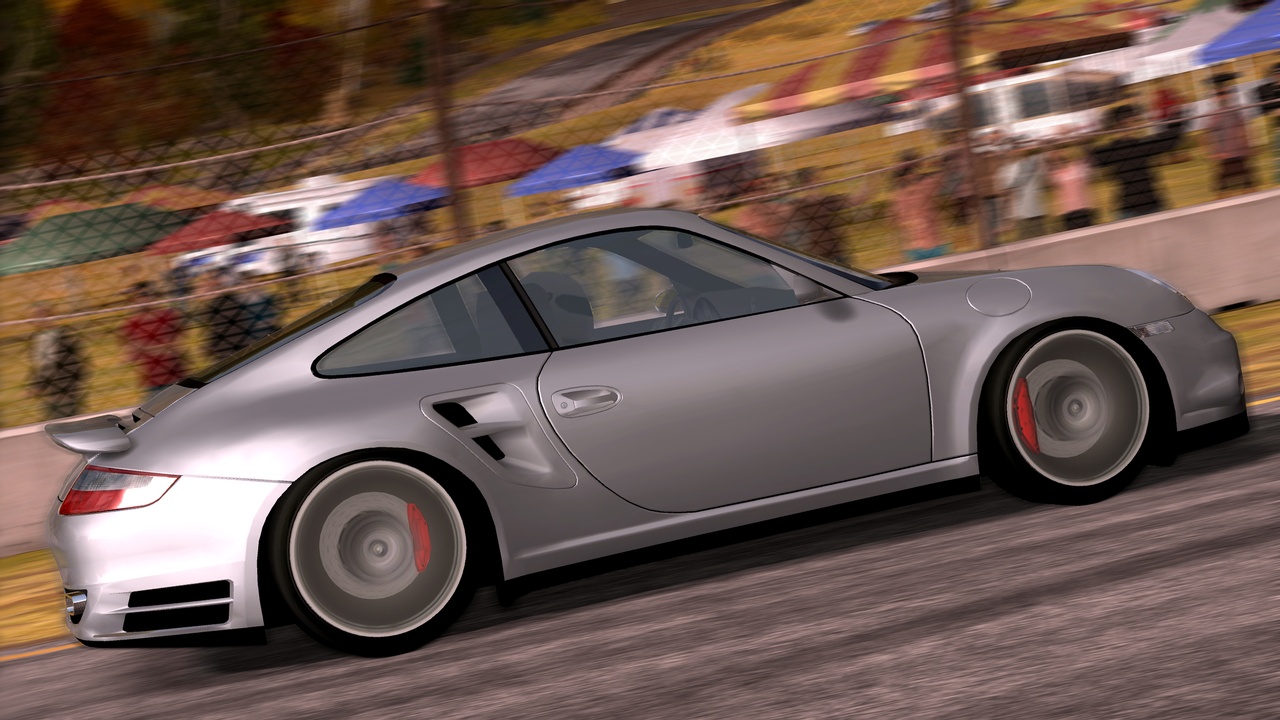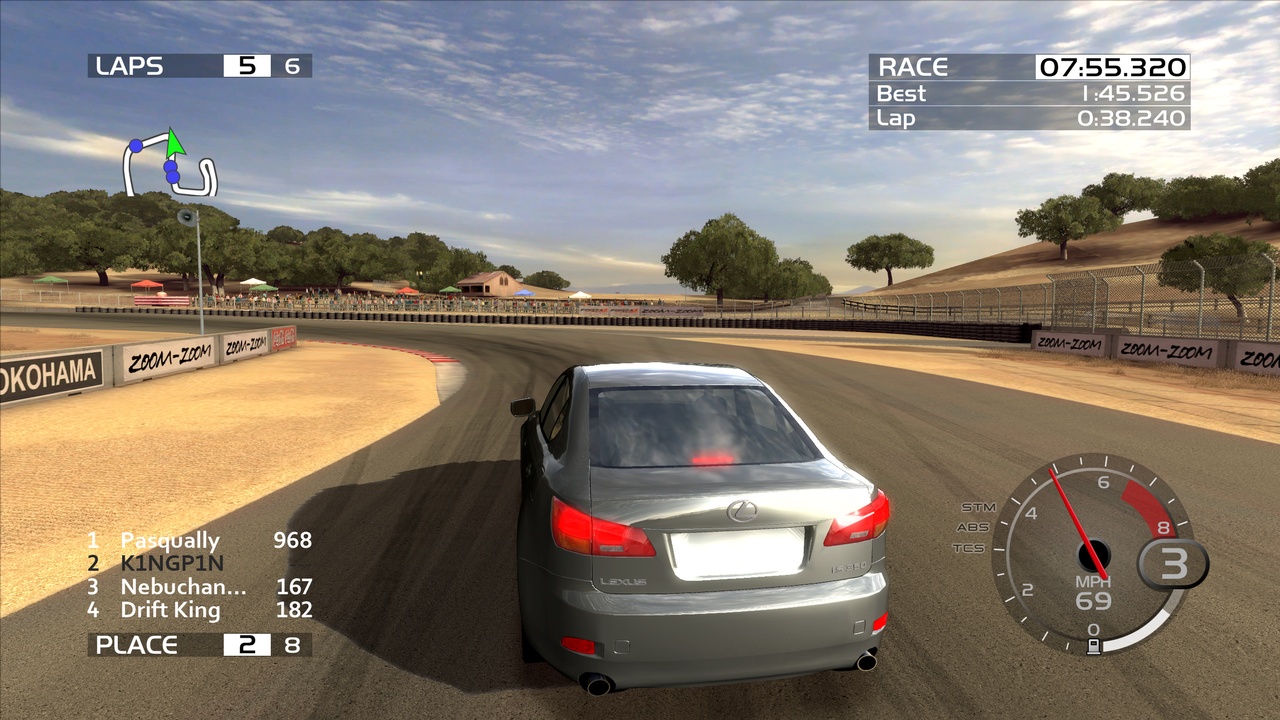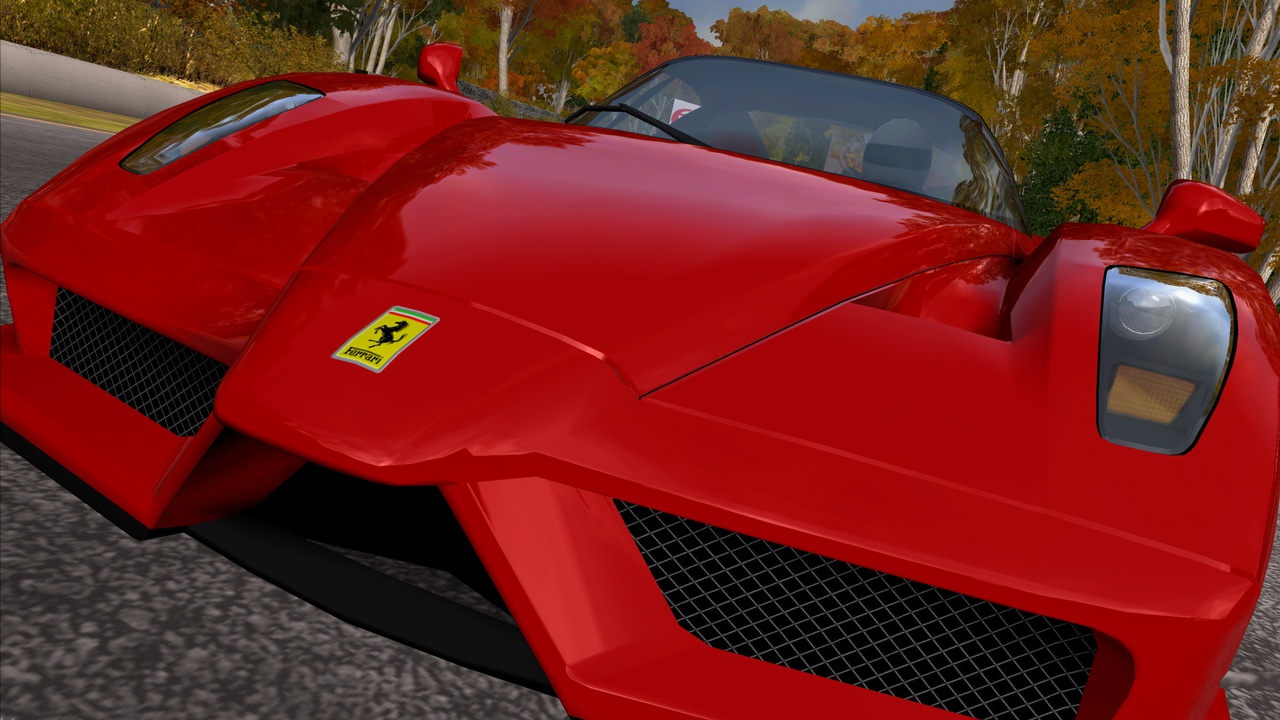GDC 07: Forza Motosport 2 Hands-On
We get a tour of the new Forza Motorsport and take it for a test drive.
Forza Motorsport 2 is the anticipated follow-up to Microsoft's original Forza Motorsport for the Xbox. With the second game in the series now moving to the Xbox 360, expectations, which were already high to begin with, have skyrocketed in anticipation of what a game already lauded for its realism and flexibility will be able to do on more powerful hardware. Having seen the game on the day before the 2007 Game Developers Conference is set to begin, we're pleased to report that the team behind Forza 2 hasn't sacrificed any ambition in its quest to meet its May release deadline.
First and foremost, Forza has always been known as a racing simulation. The demanding driving model in the original Forza Motorsport meant that getting behind the wheel was a very different experience from your typical Need for Speed or Burnout. As you might expect, that realism is still front and center in Forza 2, which we can attest, having spun our gutsy little Peugeot more than once during our hands-on time with the game.
But, as with the original, Forza 2 endeavors to be more than a racing sim; for all its disciplined approach to realistic handling and spot-on physics, the game strives to be approachable for fans who don't know drifting from drafting. Features like the dynamic racing line, variable artificial intelligence, and fine-tuning the various levels of difficulty have all been part of what makes Forza popular with a wide spectrum of players.
As game director Dan Greenawalt puts it, the idea for Forza 2 is to make a driving game that is accessible to everyone, from the hardcore tuner crowd that might never otherwise pick up a video game to the game fans who might not know anything about cars. For Greenawalt, an avid car nut, Forza is a chance to educate, as well as entertain.
The new car-classification system is a good example. In the previous game, cars were classified by different factors, such as horsepower or weight. Then they were dropped into "lettered" classes, such as class D, C, B, and so on. While that system worked, it didn't account for the wide variety of performance levels within a particular class level. With Forza 2, changes you make to your car will be noted by the class it fits into as well as by a numerical value known as a performance index. The higher the index number, the better your car will perform within that class. And if the number goes too high, your car will be reclassified into the next class up. In essence, it's a shortcut for nongearheads to find out just how much they're getting out of their current rides when customizing their cars.
And you'll spend a lot of time customizing in Forza 2. Greenawalt pointed out that this game will include roughly 50 percent more parts customization than in the original game. Fitting new parts for your ride is simple enough, but you can also perform more radical retransformations to your car, such as in swapping new engines. Want to replace that front-wheel drive in your Honda Integra Type-R (one of the 300+ cars featured in the game) with an all-wheel or rear-wheel drive system? Go for it. The only restriction on engine swaps will be plausibility (for example, no massive V10 in a four cylinder) and by license (so no switching your Ford engine out for a Dodge Hemi).
Performance tuning is only the half of it. Another popular feature from the original Forza, the extensive cosmetic upgrades and paint system, will also be back for Forza 2. Here, the game is getting another big upgrade. For example, the paint and decal system from the original game included 400 to 600 layers to use when designing your paint scheme. Budding vehicular Michaelangelos take note: In Forza 2, that number has jumped to 4,000. Beyond the sheer quantity, the paint tool will now also let you do cool things, such as select multiple layers at once or copy layers for use as patterns for your other rides. The really serious car customizers will also be able to take their customized paint jobs and "lock" them when selling cars online via Forza 2's auction house. This way, when someone buys a car you designed, he or she won't be able to pick apart the layers of your design and re-create it as his or her own. Essentially, your design becomes your own intellectual property (though we wonder if Microsoft's legal department might have any qualms with that one). Using the game's photo tool, you'll be able to photograph your car in various settings and upload that photo to the official Forza Web site where you can share your designs with the entire world.

Conceptually, the auction house is one of the most exciting new features in Forza 2. Although we didn't get to check out a live demo of how it will work, Greenawalt said the idea borrows ideas from massively multiplayer online games, such as World of Warcraft, as well as auction site eBay. Essentially, you'll be able to take any car in your collection and put it up for sale. Then other Forza players will be able to either buy out your car immediately (based on a preset price you indicate) or bid on your car and hopefully make you some real in-game cash in the process. We're curious to see more of the auction interface in action, particularly its search functionality, in the future.
While giving the guided demo of the game, Greenawalt chose to drive on one of his personal favorite tracks, Sebring. The famous circuit, home to an annual 12-hour race, is located in Florida. Part of what makes the track unique is that part of it doubles as an airport runway; this section is made of segmented slabs of concrete that don't really fit well together, resulting in a truly rough ride for car and driver alike. With this in mind, Greenawalt is quick to point out the sound design when taking a car out on the virtual Sebring. If you listen closely you'll hear the car tires and shocks bump as they pass over each of the gaps in the concrete. The engine sounds are also as varied as they were before, and the parts you have installed on the car will have a tangible effect on the car's engine sounds.

Though realistic car damage was another selling point in the original Forza, it probably wasn't as punishing as it could have been. When discussing damage, Greenawalt said that in the original design for damage in Forza, the team was shooting for a target of about 10 to 15 percent of players who would use the full simulation damage when driving races. As it turned out, the original game's more forgiving damage model resulted in roughly 30 percent of players using full damage, which meant the team had leeway to dramatically increase the damage a car could receive at the highest difficulty level in Forza 2. Keep in mind that cars are not going to be breaking apart as they do in MotorStorm or F1 Championship Edition; these are licensed rides, after all, so the development team has to balance the needs of the gaming community with the expectations of the car manufacturers who are licensing their products for the game. Still, damage has taken a step forward in Forza 2; bumpers fly off, windshields crack, and car performance takes a noticeable hit even during light scraps.
A real-time telemetry system will help you keep track of your car's status to help you avoid any such problems. During his presentation, Greenawalt brought up a menu that showed off critical information, such as tire wear, heat, and friction, as well as gauges for the individual shocks, body acceleration, and more, all of which changed as the race went on and the car and conditions adapted.
We had a chance to take Forza 2 for a spin but not in your typical racing setup. Instead, our test drive included a specially designed racing seat equipped with the latest in force feedback equipment, an Xbox 360 racing wheel, a triple-screen setup (run by three Xbox 360s) providing a front view and two side views of the track (similar to the old arcade cabinet setup for Sega's Ferrari 355 Challenge), as well as a small rearview mirror screen positioned just in front of the main screen (powered by a fourth Xbox 360). Microsoft producers told us that the truly insane Forza fans (or truly deep-pocketed fans) will be able to run this quad-screen setup, provided they have that many 360s (not to mention that many screens). Needless to say, it was an extremely cool way to experience the game.
After sinking into the racing seat, we asked for advice as to which track to check out. Our first choice, Mugello (one of three new tracks in Forza 2; the other two are the aforementioned Sebring and Japan's Suzuka), wasn't ready for a prime-time demo. So instead, we opted out for the long version of Maple Valley from the original Forza. The red and yellow of the foliage were the first things we saw, and the big bumping bass that shook the bottom of our seats was the first thing we felt. With all the assists off, we dove into the sweeping right hander that is Maple Valley's first turn, only to set the car nearly off the track entirely. Wait, where was the color-coded racing line we'd grown accustomed to? As we found out, the racing line has changed a bit. While the old dynamic line is still available as an option, we were using a slightly more challenging version of the line that only showed us the braking points of each curve. Though we only had a couple of minutes with the game, we quickly came to appreciate the challenge of the new feature.
As our lap progressed, we got a better feel for the capabilities of the car under our feet. It's obvious the development team has put a ton of time into the rumble features in the game; passing a tire or two over the rumble strips that line the corners felt like an invasion of our personal space every time (and we say that in the best possible way). Every instance of rocking and shifting of weight in the car was felt in the seat, and we expect that while it won't be the same with your typical Xbox 360 controller, it will still make for a responsive racing experience.

We don't know all of the details on Forza 2's multiplayer game, but we do know that it will offer tournaments hosted by Microsoft, as well as provide the host of races with even more options than before for creating just the type of race session you want. If you want to lock in everyone at the same difficulty level (including assists), you'll be able to do so or leave it wide open for everyone to compete as they see fit. Also the single-player and multiplayer games will be integrated into one another, so that you can conceivably finish the game only by racing in online events.
Although the racing community was disappointed when Forza 2 missed its initial release target of November 2006, Greenawalt is quick to point out that his team is "shipping a game, not a date." With just six weeks to go before the release of Forza 2, the developers are in the final stages of tuning performance before shipping it off to the factory. We hope to get our hands on the game for some more extensive previews in the near future, and we'll be bringing you much more on the game in the coming weeks.
Got a news tip or want to contact us directly? Email news@gamespot.com
Join the conversation